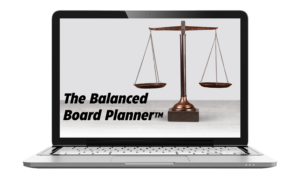I am a tennis fan. I am also an expert in and passionate about board succession planning. When Serena William’s husband Alexis Ohanian, co-founder of Reddit announced that he would be stepping down from his board seat and encouraging the board to replace him with a black candidate, I was inspired. We do need diversity at the highest levels of business. Here’s something I posted on my blog on August 22, 2013 encouraging board diversity. I would encourage you to reflect on the title of the blog “Do All of Your Board Members Look the Same?” and take the action necessary to ensure more diversity and inclusion on your board of directors.
(Originally posted August 22, 2013)
I took the picture of the sunflowers at a farm near my house that had a field of sunflowers. It was absolutely beautiful! It was acres of gorgeous yellow and brown “happy faces”. It just made me smile.
I know not all of the sunflowers in the picture look exactly the same, but if you take a quick look at the picture, they look like they do. If you took a quick look at your board of directors, would they all look pretty similar?
As I give presentations to board members across the country, I am noticing more and more that the room is filled with older adults and primarily white men. My experience has been that these are wonderful people who are extremely committed to the success of their organizations and their members. They are always open and interested in what I have to say, and oftentimes like to challenge my thoughts! So, it doesn’t bother me to speak to this type of group.
What I do worry about though, is the fact that our board members, overall, are aging and I am not sure that we are all taking care of ensuring that we have qualified and diverse successors ready to take their places when they are ready to leave.
It’s hard to find good board members. It’s even harder to find people who have the skills or even the desire to lead the board as the Chair or a member of the executive committee. So, it is important not to leave the succession of your board to chance.
Below are seven steps you should take in ensuring you have a solid board succession plan in place.
- Assess the needs of the credit union. Review the mission, vision, and values of the credit union along with the strategic plan and key priorities, and then identify the critical issues and risks that the credit union will have to face over the next three to five years.
- Create a list of required competencies. Taking into consideration the needs of the credit union, create a list of the ideal competencies/attributes that should be epitomized by your board of directors.
- Assess your current board members – Using the list of competencies/attributes, perform an assessment of the current board members, rating the prevalence of each competency/attribute from the list. The board would then evaluate the assessment in aggregate to see which competencies/attributes were fully represented on the board and which appeared to be missing.
- Provide opportunities for board member development.
- Develop a process to anticipate board member departures. If you don’t have term limits at your credit union, it can be very awkward asking individuals when they might be leaving the board. This is a very sensitive topic. Putting a process in place can help remove some of that sensitivity and help get you the answers you need.
- Build a list of potential board members and orient them to the credit union.
- Develop a formal board member succession policy.
If your board members are starting to look similar, and even if they’re not, it is time to take board succession planning more seriously. For more information on board succession planning, resources are available at www.successionapp.com.


